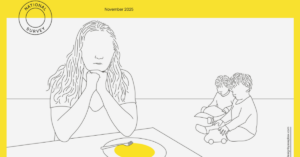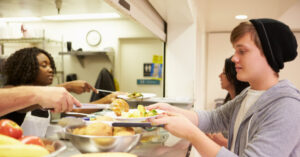Research
Hunger is increasing among those who provide care to young children
The Stanford Center on Early Childhood released a RAPID report that looks at how issues of food insecurity and hunger are affecting adults who provide care for young children. Their key finding: hunger is on the rise among child care providers.
Read MoreSecond Study of Nutrition and Activity in CACFP
USDA released their second report on the Study of Nutrition and Activity in Child Care Settings (SNACS-II), which follow their first in 2022. SNACS-II uses data from program year 2022-23 to assess how well children’s diets and CACFP meals align with the Dietary Guidelines for Americans.
Read MoreFamilies Demand Child Care Investment
A recent study by our partners at Child Care Aware® of America reveals that parents across the nation are struggling to find affordable, high-quality child care. The survey shows that parents are piecing together multiple care arrangements and facing challenges balancing work and caregiving.
Read MoreHelping Kids Grow Strong: CDC’s 2025 Nutrition Report
The CDC’s 2025 Early Childhood Nutrition Report gives us a big-picture look at how young children in the U.S. are eating and growing. It focuses on kids from birth to age 5 and shares important facts about breastfeeding, starting solid foods, eating healthy and how states support good nutrition.
Read MoreCACFP Emergency Shelter Characteristics Study
The “Characteristics of Emergency Shelters Participating in the CACFP” study by USDA seeks to better understand the characteristics of CACFP emergency shelters, who they serve, how CACFP fits into their operations, and their challenges with CACFP. The study was conducted in 2023 and collected data from 242 emergency shelters that participate in CACFP in Fiscal Year 2023.
Read MoreFCCH Provider Perception of Increased Pandemic Reimbursement
A survey was administered in the spring of 2023 of licensed California family child care homes (FCCH) to assess the perceived impacts of the increased reimbursement during the Covid-19 pandemic on CACFP participation and anticipated challenges with reinstated tiered rates.
Read MoreAdult Day Care Centers in the CACFP Study
The USDA recently released a study on the “Characteristics of Adult Day Care Centers that Participate in the USDA’s Child and Adult Care Food Program” which seeks to better understand key characteristics of adult day care centers participating in CACFP.
Read More2023 Summer Non-Congregate Meal Service
USDA released a survey report focused on SFSP and SSO sponsors who operated the non-congregate meal service option in qualifying rural areas in summer 2023.
Read MoreAfterschool Supper Participation Increased but Remains Low
Afterschool Snack Programs include the National School Lunch Program (NSLP) and the Child and Adult Care Food Program (CACFP). Through NSLP schools can serve one snack afterschool, however through the CACFP schools and sponsoring organizations are able to serve a snack in addition to a supper. This additional supper is an important opportunity to meet children’s nutritional needs after the school day is over. A report by the Food Research and Action Center (FRAC) found that afterschool supper participation increased from October 2022 to October 2023 by 6%.
Read MoreHunger Doesn’t Take A Vacation: Summer Nutrition Status Report 2024
FRAC’s latest report, Hunger Doesn’t Take a Vacation: Summer Nutrition Status Report 2024, reveals a drop in the number of children receiving nutrition over the summer following the loss of pandemic-era waivers.
Read More









